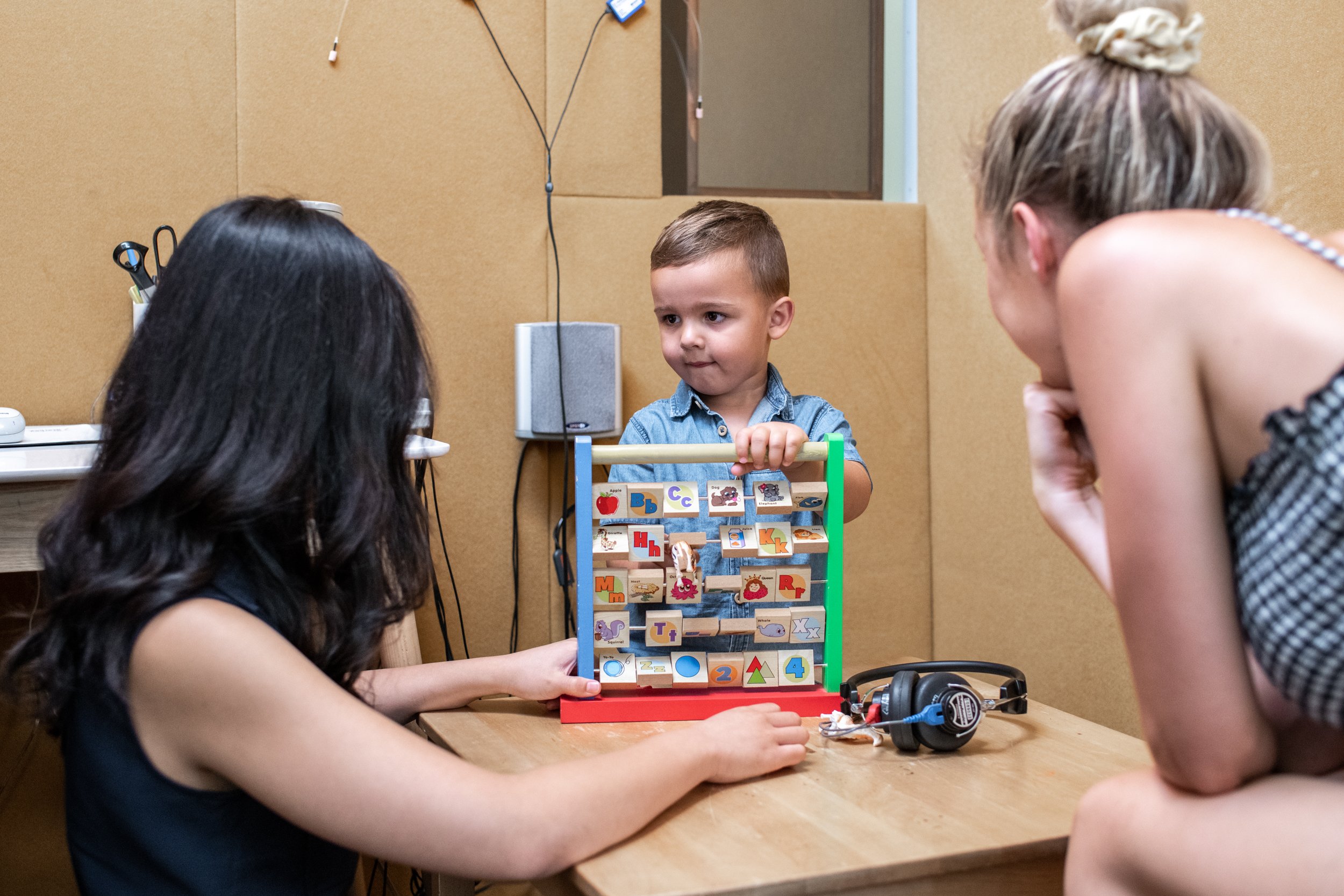When to do a hearing test for children?
Your child might see an audiologist if they have a hearing loss, speech delay/disorder, communication problems or learning disabilities.
Most Australian babies have their hearing checked very soon after birth, as part of their state or territory newborn hearing screening program. If your child passes the newborn screening test and you’re still worried about his hearing or listening behaviour at any age, it is important to contact an audiologist or speak with your GP.
Some common signs to look for babies
Does not react to loud sounds
Does not localise where sound is coming from
Has stopped babbling and experimenting with making sounds
Still babbles but is not moving to more understandable speech
Does not react to voices.
Some common sign to look for school aged children
Does not follow simple commands or understand simple directions
Shows signs of behavioural problems or social difficulties
Is falling behind with speech and communication skills
Cannot understand what others say unless they are looking directly at the speaker.
Cannot identify where sounds are coming from.
Is exhausted at the end of school from concentrating to understand speech.
Also, your GP might recommend a hearing test if your child has repeated ear infections or another serious illness – for example, meningitis – or if you’re worried about your child’s learning or general development.
What are the common causes of hearing loss in children?
There are multiple causes of hearing loss and most common causes among children are perforated eardrum from trauma or placement of a tympanostomy tube, otosclerosis, infections in childhood including measles, meningitis, the use of ototoxic medications in children, head injuries, noise exposure and as well as untreated or frequent otitis media.
Why is it so important to early identify your child’s hearing loss?
It is very much important to early identify, assess, and intervene all types of hearing loss in infants and young children to minimise deleterious effects on speech, language, education, and social/psychological development. So, the importance of hearing loss in children and detecting hearing loss in children is straightforward, because without intervention, affected children will fall behind in a variety of aspects of social development, communication, cognition, reading, etc.
How do we assess your child’s hearing?
The gold standard of hearing measurement is behavioural assessment. The goal of behavioural testing is to establish hearing thresholds across the speech frequencies for each ear, and to assess, when possible. However, appropriate behavioural procedures will depend upon the child’s developmental, cognitive and linguistic level, visual and motor development, and ability to respond appropriately. As children mature, more specific behavioural information can be obtained. There are few auditory behavioural procedures which widely use in our clinics that change with developmental level, including behavioural observation, Visual Reinforcement Audiometry (VRA), and Conditioned Play Audiometry (CPA).
Behavioural hearing tests include the following methods for the following developmental ages:
Behavioural Observation Audiometry (BOA) for developmental ages of 0 to 5 months: child’s responses may consist of quieting, eye widening, startle, etc.
Visual Reinforcement Audiometry (VRA) for developmental ages of 6 months to 2 years: child turns to the sound stimulus and a puppet lights-up to reward (reinforce) the child’s listening behaviour.
Conditioned Play Audiometry (CPA) begins to emerge around age 2 years and consistent between developmental ages of 2 to 3 years: a listening game that uses toys to maintain the child’s attention and focus to the listening task. For example, the child holds a block, waits and listens for the sound. When the child hears the sound, they drop the block in a bucket. This is similar to raise one’s hand in response to the sound, but the toys establish and maintains the child interested in the listening task for much longer than hand-raising alone. This “listening game” is demonstrated to the child by the audiologist, and once the child understands the game testing is underway.
Conventional Audiometry consistently used in children ages 5 and older: child raises hand or provides verbal response (for example, “beep”, “I hear it”) in response to the sound stimulus.
Testing Procedure
The child (and typically the parent) is seated in a sound booth. Sounds of varying intensity are presented to the child via calibrated speakers or earphones. The sounds may consist of speech or specific frequencies that are critical to hear the different sounds of speech. The audiologist looks for and records the child’s responses to the softest sounds presented and plots them out on a graph called an audiogram.
Message to parents
Detecting a hearing loss in children from an early age is vital. Undetected hearing loss can affect your child’s speech, language and cognitive development. Therefore, it is wise to have your child’s hearing tested if you have any concerns. Your kids’ hearing is important. Hence make sure you take appropriate actions immediately.
““Blindness separates us from things, but deafness separates us from people”-”

